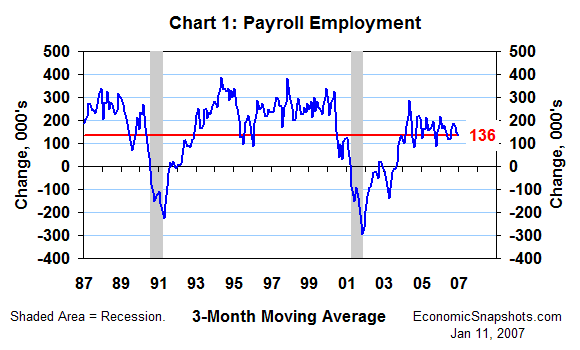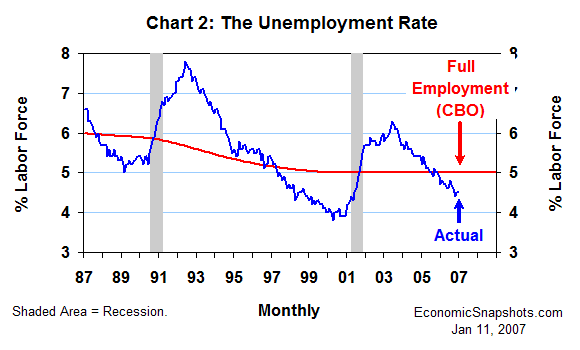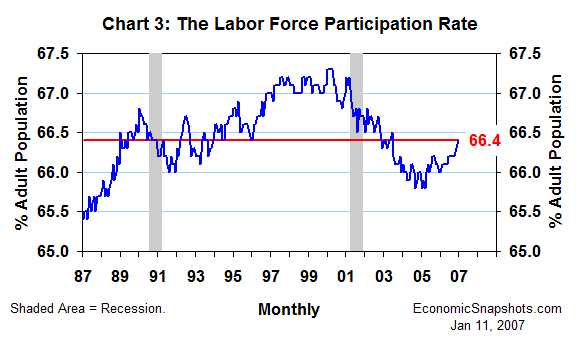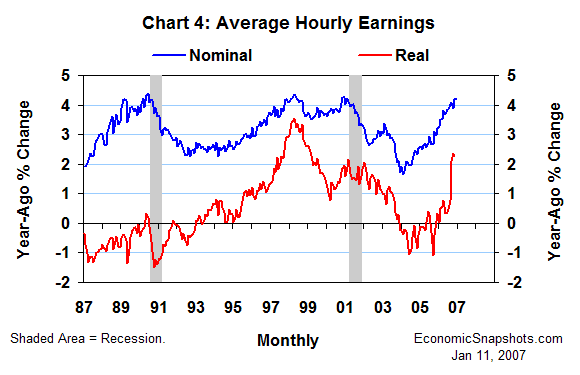
| Back to Index |
January 11, 2007 – In the data released last week, U.S. payroll employment rose by 167K in December after a revised 154K November increase. For the three months through December, payroll growth averaged an unremarkable 136K per month (Chart 1).

The unemployment rate was unchanged at 4.5% in December – a half percentage point less than the Congressional Budget Office’s estimate of its “full employment” level (Chart 2). Thus, through December, the unemployment rate continued to suggest a relatively “tight” labor supply.

The labor force participation rate edged up 0.1 percentage points to 66.4% in December, matching its November increase (Chart 3). Before November, the labor force participation rate had remained in a relatively narrow range of 66.0% to 66.2% for nineteen months.

The labor force participation rate has shown a puzzling lack of cyclical gain since the end of the last recession – suggesting that the low unemployment rate might be misleading. With these recent increases, the trend in labor force participation is beginning to look more positive now.
Average hourly earnings rose by 4.2% in December, compared to the same month of the prior year (Chart 4). In December 2005, the comparable increase was one percentage point lower at 3.2%.

Through August, virtually all of this nominal earnings growth was eaten up by inflation. However, reflecting the massive September-October plunge in energy prices, growth in the chained price index for personal consumption expenditures (the FOMC’s preferred inflation indicator) slowed from 3.2% in the twelve months through August to 1.9% in the twelve months through November (the latest available). Thus, the twelve month trend in real earnings growth accelerated from a mere 0.8% in August to 2.2% in November.
Bottom line: this combination of a steady trend in job growth and stronger real hourly earnings growth is good news for the consumption outlook.
Suzanne Rizzo